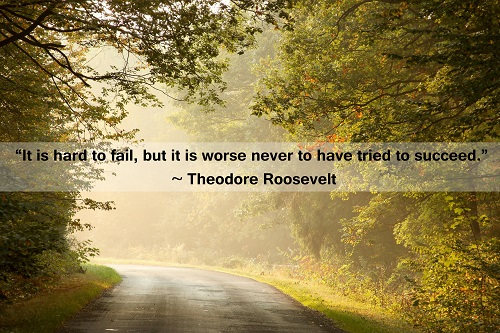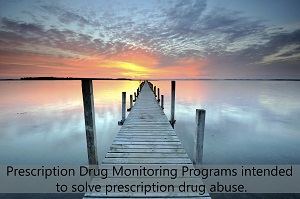Drug addiction is developed through a combination of biological and environmental factors. Each patient with an addiction represents a unique combination of factors that led to the condition. However, even if two individuals have identical environments, it does not guarantee that both individuals will have identical outcomes with addiction development.
A new study helps to explain why some individuals are able to use drugs, but do not develop an addiction. It also helps to explain why some patients are able to resist cravings after completing a substance abuse treatment program, while others experience relapse.
The study, conducted by researchers at the RIKEN Center for Molecular Imaging Science, located in Japan, and the Montreal Neurological Institute at McGill University in Canada, provides new information about brain circuitry that controls decision-making. The study finds that addiction may be linked to abnormal functions in the frontal cortex, the area that is responsible for decision-making.

The study’s findings are published in a recent issue of the journal Proceedings of the National Academy of Sciences of the USA. They show that the orbital and lateral regions of the brain, located in the frontal cortex, work together when cue related to drugs or craving is introduced. When those two areas of the brain do not work together well, addiction may be the result.
To examine this function of the brain, the researchers used a combination of tools, uniting functional magnetic resonance imaging (fMRI) with transcranial magnetic stimulation (TMS). The participants included 10 smokers, who were evaluated for cue-induced cravings and the resulting neural mechanisms. The researchers based this examination not only on cravings, but how the brain responds when drugs are not available, despite a craving.
The researchers found that among smokers the orbitofrontal cortex (OFC) was key in monitoring the level of craving and the dorsolateral prefrontal cortex (DPFC) evaluated drug cues and availability of the drug. The study demonstrated that the DPFC was able to suppress functions in the OFC if the cigarette was not available to the individual.
The study also tested the results of the DPFC being non-active using TMS and found that cravings and the related signals occurring in the OFC were not related to drug availability.
With these findings, the researchers conclude that the DPFC is central to functions of drug cues and evaluating drug availability and then works with the OFC where the information from the DPFC is used to determine whether drug-seeking behaviors will follow.
The authors of the study explain that in their smoker participants, after evaluating the drug cues and availability status in the DFPC, the cravings accumulated in the OFC. The authors found the results interesting, given that the neural circuits involved are central to decision-making and self-control, but normally guide an individual to making the most beneficial decision.
There are many research studies out there trying to understand drug addiction. Read Drug Addiction ‘Turned Off’ With Lasers to see another take on addiction recovery.
North and South America have half of the world’s heroin abusers, 45 percent of cocaine users and a quarter of marijuana users, according to a report from the Organization of American States (OAS). The current approach, the “war on drugs,” is severely lacking in support in the modern day, with numerous experts suggesting a more liberal strategy that re-phrases drug use as a health issue rather than a criminal one. This idea has been yet again proposed in a 200-page report from the OAS, urging American leaders to rethink their policies in the interest of users across the continents. Their argument takes several stands, looking at addiction as a health problem, considering the severe harm done by the drug trade, and the financial impact on both law enforcement and organized crime groups.
The Drug Use Report
 The purpose of the report was to prevent a starkly realistic portrayal of the impact of drugs across the Americas. José Insulza, secretary general of the OAS, said it is intended “to show the volume of money that changes hands and who benefits from it; to show how it erodes our social organization and how it undermines the health of our people, the quality of our governments and even our democracy.”
The purpose of the report was to prevent a starkly realistic portrayal of the impact of drugs across the Americas. José Insulza, secretary general of the OAS, said it is intended “to show the volume of money that changes hands and who benefits from it; to show how it erodes our social organization and how it undermines the health of our people, the quality of our governments and even our democracy.”
In addition to this, the report looks at the policies that have been implemented to date and the consequences if the problem isn’t dealt with more intelligently. The overall conclusion is that increased access to treatment, reduction of criminal punishments for use of drugs and strategies tailored to the conditions in the individual countries are the best approaches.
The Drug Trade
The damage done by the drug trade is one of the key points raised to support the viewpoint. As an example, Latin America produces essentially all of the cocaine consumed by Western users. The trade is run by criminal organizations, which have risen in power and come to undermine the rule of law in the region, breeding corruption, creating violence and destroying human rights. Human rights activists and journalists who expose the violence and politicians who refuse to be corrupted are at significant risk. The biggest damage, however, is to citizens caught in the crossfire between criminal gangs. Overall, the drug trade kills thousands each year across places like Central America, Mexico and Columbia.
Financial Benefits
The current system is financially beneficial only to the criminal gangs who supply and produce the illicit drugs. Nobody would buy alcohol from a gang, because it is available across the Americas and the companies who make it have standards to abide by. The black market in drugs, however, relies on those gangs entirely. According to the secretary general Insulza, this generates around $151 billion in retail for the gangs across the continents. This funds other illicit activity, and the industry also saps money from governments on both continents. In 2010 alone, the US spent $15 billion on the war on drugs, both internationally (significant chunks of the money goes to Columbia, for example) and domestically. The current system, in short, is a financial black hole.
Drug Abuse: It’s a Health Issue
The core message of the document is that addiction is a public health issue, not a criminal one. This has been stated numerous times, but the report emphatically states that decriminalization of drug use should be the basis for all public health strategies. It echoes the commonly stated criticism that addicts shouldn’t be punished for having what is widely recognized as an illness.
Drug addiction reprograms the addicts’ brains to crave drugs, so the choice to continue to use an illicit substance isn’t a moral failing; it’s more like a diabetes-sufferer having hyperglycemia after unknowingly consuming a sugary snack. Drug cravings are a symptom of an illness in exactly the same way hyperglycemia is a symptom of reduced insulin production. Perhaps the diabetes sufferer consumed too much sugary food throughout his life and consequently developed type 2 diabetes, but we don’t morally chastise him for it. Drug users have a mental health issue, which requires treatment as opposed to criminal punishment.
Sounds Good, But Is There Enough Support?
The reduction of penalties for drug abuse is obviously vital to this approach, but the support for the idea is rarely in line with the recommendations. The report isn’t in favor of legalization of all drugs—it advocates legalization of marijuana but suggests a decriminalized approach for other drugs. This would essentially render drug offences legally equivalent to traffic violations, which are rarely jail-worthy. While some of the 35 member states are receptive to the legalization of marijuana, they didn’t find any notable support for the decriminalization of any other currently illegal drug.
Despite this predictable setback, the report adds to a growing body of thought which should be nagging at politicians all over the world. Criminal approaches to tackling drug abuse don’t work; it’s essentially a punishment for suffering from a health condition. While it may be easier to avoid controversy if the idea is quietly brushed aside, you can only metaphorically cover your eyes and pretend you don’t see the evidence for so long.
03 Jun 2013
Is the Entertainment Industry to Blame for Drug and Alcohol Problems of Former Child Stars?
If you are like me, you have probably wondered why so many former child television, movie, and music stars have ended up addicted to drugs and alcohol, and just in general are living lives marked by excessive levels of melodrama and notoriety.
From Judy Garland in Hollywood’s Golden Age to contemporary figures such as Michael Jackson, Macaulay Culkin, Britney Spears, and Lindsay Lohan, there are innumerable case histories of individuals who found success on the stage, screen, and in the recording studio at tender ages only to be plagued by bouts with substance abuse and mental and emotional breakdown as they advanced into adulthood. Given how frequent and awful the stories of tragedy have been, it would be difficult not to draw the conclusion that there is something inherently traumatic about great success in the entertainment industry that causes talented young people who make it to the big time to eventually lose their way.
This is indeed an easy conclusion to draw, but that does not make it the correct one. There is no question that what young people who reach stardom at early ages experience is something far removed from normal or routine, and it may very well be that so much public scrutiny and attention so early in life does have an impact on impressionable minds that is not altogether positive. But for the sake of balance and perspective, it must be acknowledged that there have been scores of people who found success in the entertainment business who grow up to be happy, normal, successful and extremely well-adjusted people.
 So for example, while Judy Garland’s experiences with substance abuse have received much attention over the decades, we would be remiss if we did not note that the life of her contemporary, (and the most famous child star the world has ever seen), Shirley Temple, went in an entirely different direction. Temple eventually left the motion picture business and entered the world of international politics, where she helped blaze trails for women everywhere by securing appointments as a U.N. representative and the U.S. ambassador to Ghana and Czechoslovakia. And what is one to make of the career of Ron Howard, who began working steadily as an actor at the age of 6 and went on to become one of the most successful directors in the business and by all accounts a completely sober and level-headed guy? And what about all the formerly young stars who rose to prominence right alongside the notorious guys and gals we have all grown to know so well (Lindsay, Britney, Charlie Sheen, etc.) whose names have never once appeared in the tabloid press because they were busted for a DUI or forced to enter a rehab center?
So for example, while Judy Garland’s experiences with substance abuse have received much attention over the decades, we would be remiss if we did not note that the life of her contemporary, (and the most famous child star the world has ever seen), Shirley Temple, went in an entirely different direction. Temple eventually left the motion picture business and entered the world of international politics, where she helped blaze trails for women everywhere by securing appointments as a U.N. representative and the U.S. ambassador to Ghana and Czechoslovakia. And what is one to make of the career of Ron Howard, who began working steadily as an actor at the age of 6 and went on to become one of the most successful directors in the business and by all accounts a completely sober and level-headed guy? And what about all the formerly young stars who rose to prominence right alongside the notorious guys and gals we have all grown to know so well (Lindsay, Britney, Charlie Sheen, etc.) whose names have never once appeared in the tabloid press because they were busted for a DUI or forced to enter a rehab center?
There are countless examples of former child television, movie, or music stars who have gone on to lead admirable and entirely sane lives. And even among those who have run into trouble, there are many like Drew Barrymore who have been able to bounce back and apparently recover from their substance abuse issues. If we were to take a comprehensive survey, we would most likely discover that these stories of normalcy and triumph outnumber the scandalous tales and stunted life histories of Hollywood’s irredeemable bad boys and girls by a significant margin, but of course people aren’t really interested in hearing about all of the child stars who didn’t end up dead, addicted, or on the skids as adults.
This is not to suggest that there is no problem here. Insiders agree that the drug culture is alive and well in both Hollywood and the music industry and that levels of drug abuse and alcohol consumption are higher among celebrities than among the general public. But just because a certain type of temptation exists does not mean that all who are exposed to it will succumb even if they have been involved with those cultures from an early age, and the fact that so many don’t would tend to suggest that when grown child stars end up addicted and corrupted, there is a lot more going on than meets the eye.
When Parents Don’t Parent, Kids Don’t Grow Up
Rather than blaming the entertainment industry, we need to take a much closer look at the parents of these lost souls, who chose to expose their kids to the public eye during a potentially fragile stage of their lives. Many of the stars who have had the most trouble were actually pushed into the industry by moms and dads who were in it for the money or who wanted to bask in the glory of having famous sons or daughters. Judy Garland, Lindsay Lohan, Gary Coleman, Tatum O’Neal and Michael Jackson are just a few examples of troubled former child stars whose parents seem to have been more interested in fame and fortune than they were in the welfare of their children. In fact, it is quite rare to find former child stars who became addicted to drugs or alcohol later in life who would testify that they came from safe, secure and loving homes. On the other hand, young entertainers who grew up in stable homes with parents who always watched out for their interests and never pushed them to do anything they weren’t ready for are the ones who, for the most part, have seemed to do just fine after reaching maturity.
And that is the key word – maturity. So many of the child stars who have struggled as adults (Michael Jackson is the most obvious example here) never really grew up. Because their lives were so abnormal and distorted, they were never able to make the transition from adolescence to adulthood, and this “failure to launch,” to use a colloquial term, is what left them vulnerable to the dangerous temptations that the entertainment culture offers so readily. Immaturity and insecurity go hand-in-hand, which explains why Hollywood and the music industry attract so many people who lust after fame and fortune because they believe that getting people to pay attention to them and notice them is the one and only thing that can fill up the empty spaces in their souls. And what makes the situation so difficult for many former child stars is that they were taught to think and feel this way from an early age by parents who were projecting their own immaturity onto their helpless offspring.
Lights, Camera, Destruction!
 Behind the glitz, glamour, and money, Hollywood and the music industry share a dark side, and intensive involvement in this world may not be good for the minds, bodies, and spirits of vulnerable people who are in no position emotionally or psychologically to avoid all the potential pitfalls. The former child stars whose moms and dads pushed them toward the bright lights instead of allowing them to find their own passions undoubtedly carry many scars, and the bouts with substance abuse that so many have experienced is a direct reflection of this parental neglect and abandonment (lets call it what it is, kids forced to live out their parents’ dreams were most assuredly neglected and abandoned).
Behind the glitz, glamour, and money, Hollywood and the music industry share a dark side, and intensive involvement in this world may not be good for the minds, bodies, and spirits of vulnerable people who are in no position emotionally or psychologically to avoid all the potential pitfalls. The former child stars whose moms and dads pushed them toward the bright lights instead of allowing them to find their own passions undoubtedly carry many scars, and the bouts with substance abuse that so many have experienced is a direct reflection of this parental neglect and abandonment (lets call it what it is, kids forced to live out their parents’ dreams were most assuredly neglected and abandoned).
Celebrity itself is not to blame for the problem behavior of famous people, but the fact that so many seek fame with such hunger and desperation, as if it were the only thing that mattered, is a sign of deep-seated psychological and emotional immaturity. Child stars all too often are the victims of such misguided ambitions, rooted in the subconscious of their caregivers, and this is why it is hardly surprising that so many eventually fall into the greedy, grasping clutches of drugs and alcohol. Fame and fortune cannot replace parental love and support, and those who attain the former without the latter are almost inevitably headed for disaster—and the cameras will be right there to capture every moment of the action once it finally arrives.
More Hollywood News about Addiction: Colin Farrell: On Overcoming Addiction To Booze And Drugs
30 May 2013
Do Some Businesses “Reward” Drug Abuse?
An article in the Australian Business Review Weekly tells the story of “Ruth,” a high finance worker in Sydney who left her job because she wanted to stop snorting cocaine. According to her story—which was told to an Australian rehabilitation worker—substance abuse was a 24-hour habit in her business, with executives constantly sneaking off to the bathroom for a pick-me-up.
Substance abuse specialist Josette Freeman argues that it isn’t unusual in that sort of industry, claiming that meetings over wine and dinner with clients often descend into cocaine-taking, and even that the high stress and production-focused businesses essentially reward drug abuse by ignoring the issue if it benefits them. In the United States, it’s estimated that business owners lose $100 billion per year as a result of drug abuse—and the facts about its impacts don’t paint the sort of picture these businesses might imagine.
“Benefits” for Businesses
According to the US Department of Health and Human Services, in 2009 77 percent of illegal drug users had either part time or full time jobs. Given the high rates of substance abuse amongst lawyers, it seems reasonable to assume that other high-level professions will also be affected.

If you place yourself into the shoes of a business-owner or other employer (with a limited capacity for foresight), you can see that there are several superficial benefits to a drug-using workforce. Most drugs don’t even have these, but stimulants like cocaine generally increase alertness, help people stay awake, improve mental performance and reduce appetite. If you think coldly and callously, as if you’re only interested in making a profit, these effects are big plus-points for stimulant use in the workplace. You feel like you’ll get an active, focused and dedicated work-force, willing to pull long hours and with an almost constantly positive morale.
According to Josette Freeman—whose work for drug rehabilitation group SMART has put her in contact with many white-collar addicts—“there are a lot of workplaces where they don’t care too much about the workers if they are producing.” This is at least echoed in the legal profession in the US, where the problem is often ignored and allowed to continue.
Risk Factors for Workplace Drug Abuse
There are numerous different elements which can make workplace substance abuse more likely. A particularly important one is stress (which will be addressed in detail later) but many other factors such as long or irregular shifts, tiredness, repetitive duties, isolation, ease of access to substances, lack of supervision and low job satisfaction are also notable risk factors. Some of these (such as stress, tiredness and long hours) would typically be more likely to affect higher-level workers, but others (such as repetitive duties and low job satisfaction) are a particular concern for blue-collar workers. Regardless of the specific risk factors, most jobs evidently carry some inherent risk of substance abuse.
The Importance of Stress
Stress is a key factor when it comes to any type of substance abuse, and this is particularly relevant for high-level professions that carry a lot of responsibility. The mechanism by which stress contributes to addictive behavior has also been studied, but it’s important to understand that stress only creates a susceptibility to addiction. It all depends on how individuals deal with the stresses of the workplace. Healthy coping mechanisms that don’t rely on substances enable most workers to manage stress without relying on substances as a mood-elevator. However, not everybody has these coping mechanisms.
For individuals with less healthy stress management strategies, a high-stress job in the financial or legal industries can easily lead them down the road to substance abuse. As mentioned in the previous section, this is particularly likely if there is easy access to substances in the workplace. This means that if there is a “culture” of drug abuse in the office, anybody exposed to high levels of stress is especially likely to get sucked in. To truly combat the issue of workplace substance abuse, employees have to be taught healthy coping mechanisms and about the long-term effects of drug abuse in the workplace.
The Truth of the Matter
As you may expect, workplace drug abuse—which may have an initial appeal to some employers and employees—ultimately reduces productivity, increases the number of absences, and makes regular changes in employer even more likely. Even stimulants, which initially seem like productivity-drugs, can cause panic, aggression, suicidal thoughts, paranoia, and hallucinations in chronic (long-term) users. On top of this, stimulant users ordinarily binge and then “crash” in a period of little activity characterized by depression, anxiety, and cravings.
Workplaces need to remain vigilant against drug abuse, and it’s advisable to have a policy in place for dealing with workplace substance abuse. In addition to educational programs to increase awareness, it’s important for employers to provide access to treatment and support. Businesses should also be clear about testing protocols and commit to disciplinary action where required. It’s a problem that spans all workplaces, and all businesses must take steps to protect against it.
Read more about The Dangers of Recreational Drug Use Here
The problem of inhalant abuse has surfaced again in a recent story from California, where nitrous oxide abuse is linked to the death of a college student. According to the Substance Abuse and Mental Health Services Administration (SAMHSA), over 1 million Americans abuse inhalants each year, and they’re keen to point out that the problem is far from confined to adolescents. In the wake of the incident, law-makers in California are looking at implementing new legislation and raising awareness to reduce the numbers of needless deaths from inhalant abuse. However, the strategy appears to be geared toward young people, when national research has shown that the majority of inhalant admissions are actually from adults.
The Recent Death
Nineteen-year-old Claremont McKenna College student Ali Mirza was found with nitrous oxide canisters, or “whippets,” in his dorm room when he died. He was rushed to Pomona Valley Hospital Medical Centre, after paramedics failed to revive him at the scene of the incident last month. He was pronounced dead at 2am on May 17th, and his funeral is scheduled for the June 15th. His family and friends will mourn his untimely passing, but the increased efforts of police officers and law officials to combat inhalant abuse may prove to have positive consequences for LA’s youth.
The Dangers of Inhalants
“Inhalants” is actually a fairly broad term to describe drugs that are “huffed” by users and many different substances could fall under the group. These include paint, marker pens, glue, air freshener, butane and substances like nitrous oxide. Despite the large number of substances used, most of them have similar effects to anesthetics and carry numerous potential risks. The most widespread (being a possibility with all inhalants) is sudden sniffing death syndrome, which basically results from a disturbance to the heart’s natural rhythm and is often fatal. Inhalants can also cause brain cell death, lung damage, short-term memory loss, and liver and kidney damage.
Nitrous oxide balloons (commonly known as “laughing gas”), in particular, pose a problem because the effect of a single “high” only lasts for five minutes or less. This means that users will generally repeat doses in a single evening of use, and this multiplies the potential for damage. When the user is “huffing,” he is depriving himself of oxygen, and repeated oxygen deprivation can lead to unconsciousness or—over time—brain damage.
The Response
The problem of inhalant abuse has been on the rise among California youths, according to Veronica De Alba (a deputy city attorney in LA), and this has led her to push for increased legislation to protect California adolescents. Police in the area are working on an ongoing 15-month investigation – entitled “Operation No Laughing Matter” – to curb the usage and availability of nitrous oxide. This has dramatically reduced the supply of the drug in the LA County area, but a continued effort is evidently required to prevent resurgence in usage down the line.
 Not Just Teens
Not Just Teens
Research from SAMHSA has shown that adults actually make up the majority of admissions to treatment facilities for inhalant abuse. The study showed that out of all admissions to treatment facilities for inhalant abuse, 54 percent were from people aged 18 or over in 2008. Admittedly, the majority of these admissions (52 percent) were from those in the 18 to 29 age group, but it still calls the adolescent focus of recent efforts into question.
While there is obviously a problem with inhalant abuse among teens, the problem is far from confined to them, and any public health-focused responses should take this into account. The sad truth is that inhalant abuse, like all drug abuse, may be commonly associated with troublesome youths, but it’s actually common in people from all walks of life. Some similar assumptions, which may be made about the race of inhalant abusers, were also addressed by the study and the results showed that the majority of the admissions were white males.
Broadening the Scope of Prevention and Education
Public awareness of the dangers of huffing will undoubtedly be improved by the recent story, but it’s important that you don’t mentally file it way as something that only really affects young people. The negative health impacts of huffing don’t discriminate based on age—they can affect any user—and research seems to show that adults are actually more likely to be heavy huffers. Broadening the scope of inhalant awareness campaigns to also appeal to adults initially seems like an unnecessary step, but statistics tell us that it’s just as vital as targeting teens and young adults.
There is little argument that America is in the midst of an opioid epidemic, but health officials will argue about how to solve the problem.
Scientific articles published recently in the same journal represent ideas that conflict. The Annals of Internal Medicine, a publication established in 1927 by the American College of Physicians, published two articles on the subject of restriction prescription in hospital emergency departments. The issue revolves around the current guidelines for how much pain medication should be kept in the pharmaceutical areas of emergency departments. One side of the debate says that the current regulation of a three-day supply is not enough for the average emergency department. The other side of the debate says the limited supply will force doctors to make wiser choices in who gets what pain medicine.
Prescription Drug Abuse
New York City made headlines earlier this year when city officials announced that the most powerful and common painkillers on the market today would be restricted in the city’s 11 public hospitals. The move was in response to the abuse of painkillers that has gripped the city. These painkillers include Vicodin, OxyContin and Percocet. Methadone and Fentanyl are no longer distributed in the public hospitals. Those in favor of the restrictions note that there has been a rapid increase in opioid analgesic consequences and that restricting the medications in question will help doctors provide safer care for their patients who are experiencing issues with pain.
Many Americans now have an expectation that a visit to the emergency room will result in acquiring pain medication. Some emergency department personnel agree that something has to be done about that perception, which is bolstered by doctors that could perhaps be less willing to doll out the drugs to patients in pain. Non-narcotic medications are now beginning to find their way into emergency departments, as are pain meds that are engineered to be less addictive.
A mention of psychedelic drugs may bring to mind the free living of the 1960s. Images surface of a time gone by, when experimentation was new to many young people and celebrated by some groups.
However, a new study shows that this perception may not match the reality. Far from being a time gone by, the study provides evidence that psychedelic drug use is no relic from the ‘60s. It is, instead, a common practice that ranges from experimentation to religious ritual.
The study, authored by Teri S. Krebs and Pal-Orjan Jansen of the Department of Neuroscience at Norwegian University of Science and Technology, relied on data from over 57,000 respondents. The findings are published under the title “Over 30 million psychedelic users in the United States.”
The study authors utilized results from the 2010 National Survey on Drug Use and Health, a function of the Substance Abuse and Mental Health Services Administration. The study used telephone surveys, asking individuals 12 years and older about their drug use and other health-related topics.
The analysis showed that an estimated 32 million individuals in the United States have tried LSD, psilocybin (“magic mushrooms”), or mescaline (peyote and other types of cacti). Between the ages of 21 and 64, 17 percent of individuals have tried these drugs.
The age group where the largest concentration of psychedelic drug users was found was in the 30 to 34 age group. In this age range, 26 percent of males and 15 percent of females had tried some form of psychedelic drug.
 The researchers explain that the rate of lifetime psychedelic drug use has not changed significantly in the decades since the ‘60s. The drugs continue to be widely used. However, there are several aspects of psychedelic drugs that make them different than other drugs.
The researchers explain that the rate of lifetime psychedelic drug use has not changed significantly in the decades since the ‘60s. The drugs continue to be widely used. However, there are several aspects of psychedelic drugs that make them different than other drugs.
The effects of the drugs, the way they work in the body, and the risks associated with them are clearly distinguishable from other drugs. They do not carry a risk of physical harm, they don’t lead to addiction and experts generally believe them to be less risky than alcohol or other types of drugs.
Psychedelic drugs, however, can cause anxiety and an experience of confusion.
The study authors note that older adults were more likely to have a lifetime history of LSD or mescaline use, while younger adults seemed to be more attracted to the use of “magic mushrooms.” The use of the mushrooms has been shown to have increased during the years since the 1970s.
The drugs are often sought for their reportedly mystical effects. The use of plants with psychedelic effects for such purposes has been traced as far back as 5,000 years.
To understand the effects of psychedelic drugs on humans further – read:
New Research Opens Door For Directly Understanding Effects of Psychedelics on Humans
Prescription Drug Monitoring Programs (PDMPs) have been implemented in almost every state and they offer new hope in the fight against the prescription drug abuse epidemic. However, with underfunding and some objections from doctors being raised, the effectiveness of the virtually nationwide approach is yet to be established. It’s touted as a solution to the problem of “doctor shopping” and as a useful approach in curbing prescription drug abuse on the whole, but addiction is a complex issue to tackle. Finding out about the programs, the problems they intend to solve, and the potential issues with the approach helps you understand what states across the country are doing to combat the epidemic.

Prescription Drug Abuse Statistics
According the National Institute on Drug Abuse, 7 million Americans used prescription drugs non-medically in 2010. The most common type of drugs abused is opioid analgesics like Vicodin, which are basically narcotic painkillers related to heroin. Other substances, such as amphetamine-like stimulants and tranquilizers, which treat anxiety, are also widely abused across the country. A report in the Los Angeles Times reveals that deaths from drug overdoses have increased for the eleventh consecutive year. The problem is believed to stem from the relative availability of prescription medicines and their reputation as “safe,” combined with the addictive nature of the substances.
Doctor Shopping
Doctor shopping is the practice of going to numerous doctors for prescriptions of narcotic medications to get more pills. It’s already outlawed according to general fraud, subterfuge, and deceit laws across virtually all states, but actually identifying it is extremely challenging without a centralized database. As a doctor, you have no way of knowing if a patient coming into your practice has already gotten another prescription from somebody else, unless each prescription is registered. The relative ease of doctor shopping means that some people are able to obtain vast quantities of narcotic medicines and then sell them for others to abuse.
PDMPs
This is why prescription monitoring programs were set up. They focus on potentially addictive drugs such as OxyContin, Adderall, Valium and Vicodin, and can be thought of as central databases for doctors to record their prescriptions. Before issuing a prescription, doctors check the database to determine whether the individual has been prescribed the drugs before or should already have a sufficient supply. The benefits of this are immediately obvious: not only will it prevent doctor shopping; it will also help to identify individuals who may be addicted to prescription drugs. Federal funding is available, which has driven the overwhelming majority of states to set up their own programs.
The programs have been widely adopted across the US, with states such as Wisconsin and Florida recently passing bills and implementing PDMPs. Now, only Missouri lacks a program, after the bill was defeated in 2012. Despite problems with the functionality of the databases and some funding issues, doctors in places such as San Diego have eagerly registered for the programs.
Problems With the Approach
Despite the positive outlook for prescription monitoring programs across the country, there are some potential issues with the strategy. The main one is the privacy, which was cited as a reason the idea isn’t being well received in Missouri. Essentially, confidential medical information is being placed onto a widely accessible database. Although the databases can only be accessed by medical professionals and pharmacists, there is an obvious concern about patient privacy.
Whether this fairly trivial intrusion into personal privacy is warranted by the scale of the prescription drug problem in the U.S. is open to debate, but ultimately doctors and pharmacists have the same information for their regular patients anyway.
Doctors have raised some more practical and defensible issues, though. One such criticism is that the databases are extremely time-consuming. Consulting a database before prescriptions are given and then recording any prescriptions takes time (particularly if there are server issues or problems with the functionality of the database), and this could impact the number of patients they could see.
Conclusion
Prescription monitoring programs will not prevent people from abusing prescription medicines. Patients will still often receive too many pills for their pain and later give in to the temptation of recreational use or give them to friends to do the same. However, the databases will do wonders to reduce the amount of prescription drugs available for people to abuse. Doctor shopping isn’t the whole problem, but it is a significant contributor, and the monitoring programs are exceptionally well-equipped to curb the practice. In this way, it’s a vital step toward reducing the shocking numbers of deaths each year from prescription drug overdoses, and something that should be welcomed with open arms.


